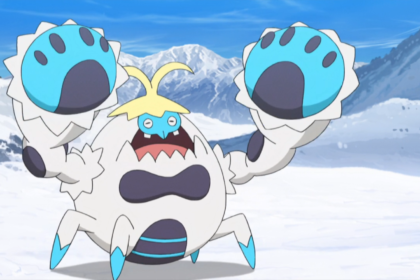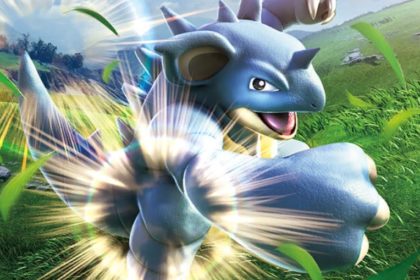Hornets are predatory wasps with more than 20 species. They’re primarily found in Europe, Africa, Asia and North America. They like to inhabit forests and some rural areas. Hornets are classified as pests in most parts of the world due to their ability to kill honeybees and drive them out of their native habitats. Take a look below for 26 more interesting and fun facts about hornets.
1. The biggest hornet species is the Asian giant hornet and it can reach lengths of up to 2 inches.
2. Most hornet species can easily be recognized by their striped, black and white colored body.
3. Their diet consists of tree sap, fruit and various insects. However, they tend to prey on bees the most.
4. They’re active during the night and during the day.
5. Individual hornets, which are called scouts, search beehives. They produce pheromones that let other members of the colony know that they have identified the target.
6. Japanese honeybees lure hornet scouts into their beehive and then gather around it. The massive amount of honeybees increases the temperature in the area and releases carbon dioxide, which combines with the heat to kill the scout.
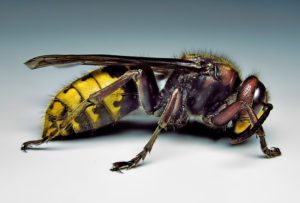
7. Hornets attack humans in self defense. Unlike bees, hornets can sting multiple times. Some stings can be fatal to a human due to allergies.
8. Similar to other insects, they live in hives that have a queen, worker bees and a few males.
9. They build their nests in branches, inside trees, attics, barns and under roofs.
10. Their nests are made out of chewed wood mixed with saliva, due to it having a papery texture. Football shaped nests are filled with rows of combs and chambers where the queen lays her eggs.
11. Hornet colonies last only one season. Queens that hatched at the end of the summer will leave the nest and mate with males of other colonies. They will store the sperm inside their body during the winter and use it to fertilize new eggs at the beginning of spring.
12. Larvae will emerge from eggs after 5 to 8 days. The queen will feed them partially chewed bees and saliva while the nest is being constructed.
13. After 2 weeks, the larvae will undergo 5 developmental stages as it transforms into a worker. After the first generation of workers is created, the queen will go back to laying more eggs.
14. Worker hornets are responsible for building new cells, feeding the new larvae and protecting the colony from any intruders.
15. Near the end of her life, the queen will lay many fertilized eggs that transform into a new generation of queens. She will also leave many unfertilized eggs that will give birth to drones, which will be the sperm donors to the new queen.
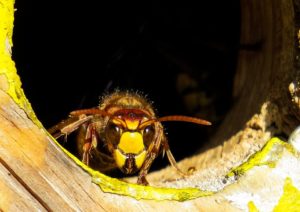
16. Drones will die as soon as they fertilize the eggs. Workers will live from spring to summer and the queen will complete her life cycle in one year.
17. The insect family, Vespidae, contains hornets, yellow jackets, paper wasps, potter wasps and pollen wasps. Yellow jackets are the most familiar hornet species.
18. True hornets belong theo Vespa genus in the Vespidae family. The genus is the first part of the scientific name for a living thing.
19. The bald faced hornet of North America is a type of yellow jacket, however, it has black and white markings instead of the black and yellow markings of the common yellow jacket wasp.
20. The sting of the Asian giant hornet is very painful for humans and it can be potentially fatal. The venom is powerful and it contains chemicals that can destroy human tissue and interfere with nerve action. Many people in Japan die each year from giant hornet stings.
21. People in Japan like to eat giant hornets, either in their raw form or when they’re fried.
22. The secretion that larvae produce to attract workers is known as vespa amino acid mixture, or VAAM. This gives the workers energy and is the basis of a Japanese sports drink, which contains synthetic chemicals that are similar to those in the larval secretion.
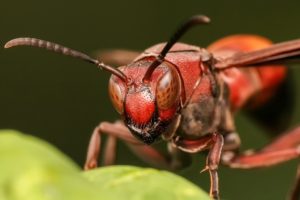
23. The Asian hornet can be recognized by its dark body, the orange color on the rear half of its abdomen, the yellow and orange bands on the abdomen, the orange face and the yellow legs.
24. The Asian hornet is believed to have entered France in a shipment of Chinese pottery in 2004. It has now spread to other European countries.
25. In France, the Asian hornet is known to build its nests in tall trees, under decks, in sheds, or in garages.
26. The head of the Nantes Botanical Garden in France has found that a pitcher plant species can catch Asian hornets without catching European hornets, other wasps and bees.


